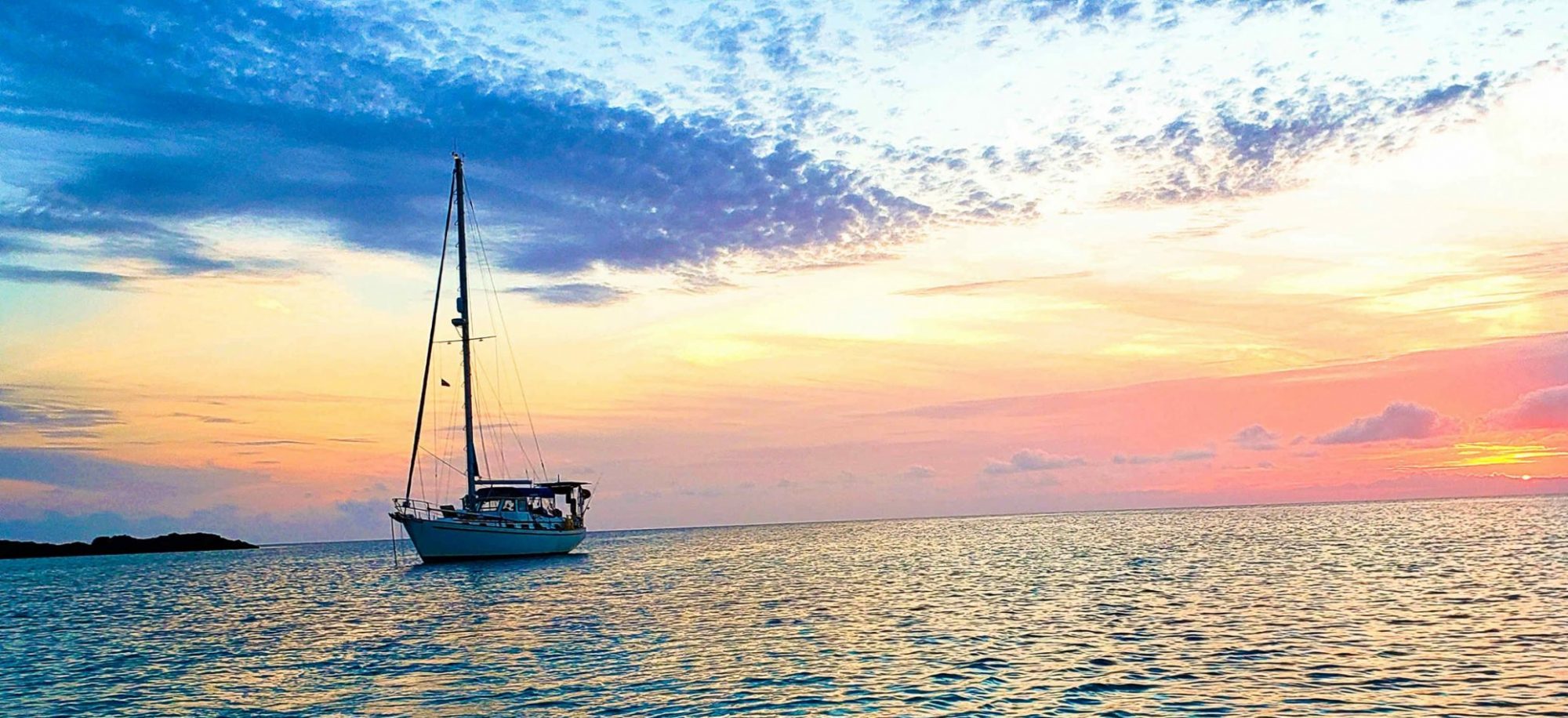I am not an expert on ground tackle for yachts, bass boats, or dinghies. I have anchored in different conditions, on different boats, of different sizes, with very different means. When I started boating again I found that I had no technique at all and, except in the mildest of conditions, could not count on my boat staying where I wanted it to. But I used a technique so powerful and so profound that my anchoring improved 100% overnight. I must say, that this technique is available to anyone novice and veteran alike. Frankly, its so simple I don’t know why people don’t use it more often. What is it? I asked someone who knew what they were doing…
Really, I took a “class” on cruising from Offshore Sailing School. In it, Kelley, the instructor, taught us by having us set the anchor over and over and over. I learned to back down on the anchor and started to “feel” when it set. I also got his opinion on different anchors for different bottoms and conditions. Through the years since that instruction I have put those skills to the test in various locations.
Here are some things I have discovered. A heavy anchor is better than a light one, but not so heavy that you can’t get it off the bottom. Setting an anchor seems easier with nylon rode than with all chain; it stretches and you can see it as well as feel it when the anchor grabs. Chain however can help keep you in place even with a marginal anchor set and in some bad conditions.
My favorite anchor was the Danforth, especially on small boats. I mostly anchored for the night, in protected waters with nice mud or sand bottoms. But it seems to have some trouble resetting if the wind reverses AND there is anything caught in the flukes. I mean anything. It was during a Bahamian thunderstorm last summer that the general superiority of plow type anchors was revealed to me. We had set the anchor in Manjack to set us up for the Stranded Naked party the next day. We set it, then dove the anchor. It was set, not deeply and a little off center, but the winds had really slacked so we left it. Slightly after dark the winds came back with a vengeance and snapped the boat and its anchor rode to attention, in the opposite direction it was set. For an hour we were hammered by 45-50 knot winds and driving rain. It felt like we were pushed all around the anchorage, but our chart plotter with drag alarm said otherwise. We had paid out a lot of scope likely 7 to 1 and it held. During the storm we could not see much, but a boat that came late to the anchorage was dragging down on us. When the storm passed they were only about 30 feet away from us. Up came the anchor. We moved.
The area we were in had a sanding bottom with grass. In years past, using a Danforth, the boat would have dragged to disaster. The flukes would have levered out of the sand when the direction changed and very well could have fouled from all the grass. The plow style anchors couldn’t care less, especially with lots of chain. They set hard and if they come out seems they have a better chance of resetting. I am now a big fan.
However, I hear that they are good, but not the best. So what are the best for what conditions?
